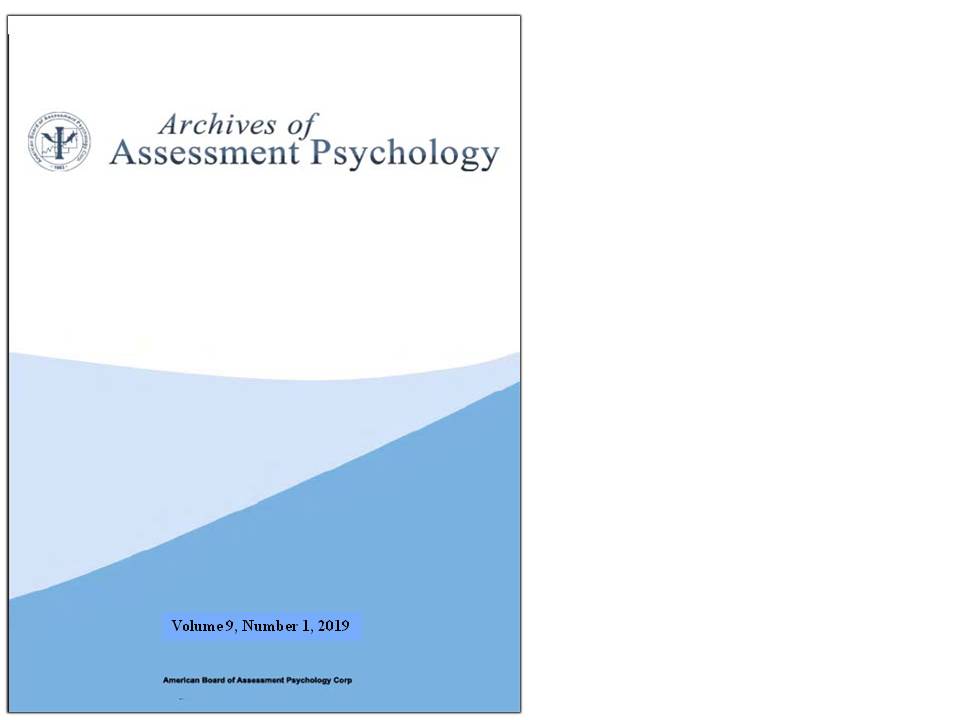Venezuelan Report on the MMPI-2 RC Scales when Simulating a Pain Scenario
Abstract
When experiencing a painful injury, some Latino subcultures (e.g., Puerto Ricans) tend to report more psychological distress than other Latinos and non-Latino Whites. The purpose of this paper was to determine if Venezuelans, like Puerto Ricans, report higher levels of psychological discomfort when pretending to be in pain, when compared to Latinos and non-Latino Whites living in the U.S. In this study, participants were asked to complete the MMPI-2 Restructure Clinical (RC) Scales in standard fashion and while pretending they have been in continuous pain for six months. Venezuelans scored significantly higher on RC1 and significantly lower on RC4 than the other groups when pretending to be in pain. The current results suggest that Venezuelans may feel comfortable reporting emotional stress via physical complaints and do not see themselves as acting antisocially as the result of a painful injury. Clinical implications are discussed.
References
References
Abraido-Lanza, A. F., Chao, M. T., & Florez, K. R. (2005). Do healthy behaviors decline with greater acculturation? Implications for the Latino mortality paradox. Social Science & Medicine, 61(6), 1243–1255. doi:10.1016/j.socscimed.2005.01.016
Azaroff, L. S., Levenstein, C., & Wegman, D. H. (2002). Occupational injury and illness surveillance: Conceptual filters explain underreporting. American Journal of Public Health, 92(9), 1421–1429. doi:10.2105/ajph.92.9.1421
Bates, M. S., Rankin-Hill, L., & Sanchez-Ayendez, M. (1997). The effects of the cultural context of health care on treatment of and response to chronic pain and illness. Social Science & Medicine, 45(9), 1433–1447. doi:10.1016/s0277-9536(97)00068-3
Ben-Porath, Y. S., & Tellegen, A. (2008). MMPI-2-RF: Manual for administration, scoring and interpretation. University of Minnesota Press.
Boccaccini, M. T., & Brodsky, S. L. (1999). Diagnostic test usage by forensic psychologists in emotional injury cases. Professional Psychology: Research and Practice, 30(3), 253. doi:10.1037/0735-7028.30.3.253
Brislin, R. W. (1970). Back-translation for cross-cultural research. Journal of cross-cultural psychology, 1(3), 185-216. doi:10.1177/135910457000100301
Butcher, J. N., Cabiya, J., Lucio, E., & Garrido, M. (2007). Assessing Hispanic clients using the MMPI-2 and MMPI-A. Washington, DC US: American Psychological Association. doi:10.1037/11585-000
Butcher, J. N., Dahlstrom, W. G., Graham, J. R., Tallegen, A., & Kaemmer, B. (1989). Manual for administration and scoring. MMPI-2. Minneapolis: University of Minnesota Press.
Cabiya, J. J. (1996). Use of the MMPI and MMPI-2 in Puerto Rico. In J. N. Butcher (Ed.), International adaptations of the MMPI-2: Research and clinical applications (pp.284–304). Minneapolis: University of Minnesota Press.
Chung, H., Teresi, J., Guarnaccia, P., Meyers, B. S., Holmes, D., Bobrowitz, T., … Ferran Jr., E. (2003). Depressive symptoms and psychiatric distress in low income Asian and Latino primary care patients: Prevalence and recognition. Community Mental Health Journal, 39(1), 33–46. doi: 10.1023/A:1021221806912
Dong, X. S., Men, Y., & Ringen, K. (2010). Work-related injuries among Hispanic construction workers—Evidence from the medical expenditure panel survey. American Journal of Industrial Medicine, 53(6), 561–569. doi:10.1002/ajim.20799
Dubowitz, T., Bates, L. M., & Acevedo-Garcia, D. (2010). The Latino health paradox: Looking at the intersection of sociology and health. In C. E. Bird, P. Conrad, & A. M. Fremont (Eds.), Handbook of medical sociology (6th ed., pp. 106–123). Nashville: Vanderbilt University Press.
Graham, J. R. (2006). MMPI-2. Assessing Personality and Psychopathology. (4rd ed.) New York: Oxford University Press.
Hiott, A., Grzywacz, J. G., Arcury, T. A., & Quandt, S. A. (2006). Gender differences in anxiety and depression among immigrant Latinos. Families, Systems & Health, 24(2), 137–146. doi:10.1037/1091-7527.24.2.137
Hollingshead, N. A., Ashburn-Nardo, L., Stewart, J. C., & Hirsh, A. T. (2016). The pain experience of Hispanic Americans: A critical literature review and conceptual model. The Journal of Pain, 17(5), 513–528. doi:10.1016/j.jpain.2015.10.022
Kirmayer, L. J., & Sartorius, N. (2007). Cultural models and somatic syndromes. Psychosomatic Medicine, 69(9), 832-840. doi:10.1097/PSY.0b013e31815b002c
López, G. (2015). Hispanics of Venezuelan origin in the United States, 2013: Statistical Profile. Washington, DC: Pew Research Center.
Magni, G., Rossi, M. R., Rigatti-Luchini, S., & Merskey, H. (1992). Chronic abdominal pain and depression. Epidemiologie findings in the United States. Hispanic health and nutrition examination survey. Pain, 49(1), 77-85. doi:10.1016/0304-3959(92)90191-d
Pransky, G., Moshenberg, D., Benjamin, K., Portillo, S., Thackrey, J. L., & Hill-Fotouhi, C. (2002). Occupational risks and injuries in non-agricultural immigrant Latino workers. American Journal of Industrial Medicine, 42(2), 117–123. doi:10.1002/ajim.10092
Shrout, P. E., Canino, G. J., Bird, H. R., Rubio-Stipec, M., Bravo, M., & Burnam, M. A. (1992). Mental health status among Puerto Ricans, Mexican Americans, and non-Hispanic whites. American Journal of Community Psychology, 20(6), 729–752.
Suzuki, L. A., Ponterotto, J. G., & Meller, P. J. (2001). Handbook of multicultural assessment: Clinical psychological and educational applications (2nd ed.). San Francisco: Jossey-Bass/Pfeiffer.
U.S. Census Bureau. (2017a). ACS Demographic and Housing Estimates. Retrieved from https://factfinder.census.gov/faces/tableservices/jsf/pages/productview.xhtml?pid=ACS_16_5YR_DP05&prodType=table
U.S. Census Bureau. (2017b). Selected Population Profile in The United States. Retrieved from https://factfinder.census.gov/faces/tableservices/jsf/pages/productview.xhtml?pid=ACS_16_1YR_S0201&prodType=table
Zamora-Kapoor, A., Omidpanah, A., Monico, E., Buchwald, D., Harris, R., & Jimenez, N. (2015). The role of language use in reports of musculoskeletal pain among Hispanic and non-Hispanic white adolescents. Journal of Transcultural Nursing, 28(2), 144-151. doi:10.1177/1043659615623326

